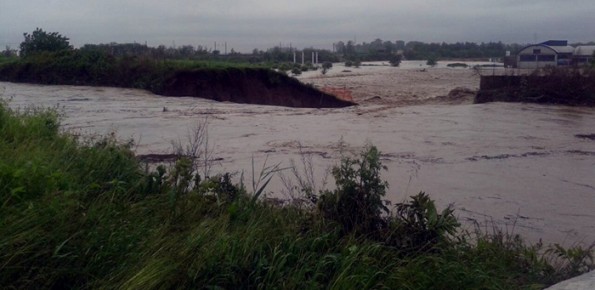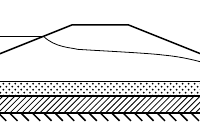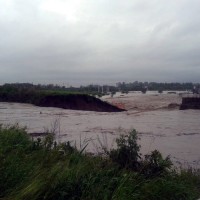RIVERbank Surveillance bAsed on Fiber optic sEnsors
(RIVERSAFE)

Background
In the last decades Europe and Italy suffered many damaging floods, causing thousands of deaths, the displacement of millions of people and billions of euros in insured economic losses. Veneto Region has been also strongly stricken in 2010. The European Commission has identified the need for adaptation of risk management in several documents in order to reduce the likelihood and/or the impact of floods [1]. Starting from these remarks, the main aim of the present project is to provide the Relevant Authorities with a useful tool to prevent flooding, when possible, or manage the flood emergency, including the evacuation of the population at risk. In case of floods the temporal analysis of the processes is very well investigated and many mathematical models forecasting the time of propagation of flow-peak discharge have been developed. On the other hand, the spatial forecasting of possible riverbanks breaking is still not solved satisfactory, mostly because of a lack of information about riverbanks conditions. Monitoring of river embankments is nowadays largely based on visual direct inspection made by technicians; furthermore, current monitoring systems are very rare and, above all, they provide discrete and localized (i.e. non-distributed) information.
Purpose
The research project aims at developing an early warning and safety assessment system to effectively help in preventing floods due to riverbank collapse caused by seepage. The main goals are the development of: (i) a fiber optics sensor (FOS) system for distributed monitoring of soil wetting inside the riverbank and foundation soil; (ii) a model to link FOS data with riverbank seepage in order to set up an effective tool capable of detecting weakness in bank sections.
Methods
FOS based monitoring system should be an excellent support in preventing floods due to riverbank collapse. The system will be validated and calibrated by integrating an innovative technique such as distributed FOS with a network of conventional sensors for a full set of relevant geotechnical parameters. Indeed, it is very valuable to couple (i) real-time geotechnical data, (ii) high spatial resolution monitoring systems such as FOS-based ones and (iii) soil hydro-mechanical models to make the step towards operational early warning systems.
Results
The expected results are:
- Design of distributed FOS for the monitoring of temperature, pressure and strain in soil.
- Numerical model of riverbank seepage and failure mechanisms will be defined, based on the thermo-dynamic equilibrium of soil in partially saturated conditions.
- Definition of a protocol and of a Best Practice for designers, administrators and users of a riverbank FOS-based monitoring system.
Products
Optical fiber Sensors for measurement of crucial parameters for riverbank stability; scientific articles appeared in journals and presented at international conferences; guidelines for the application of fiber optic sensors in parallel to traditional instrumentation.




